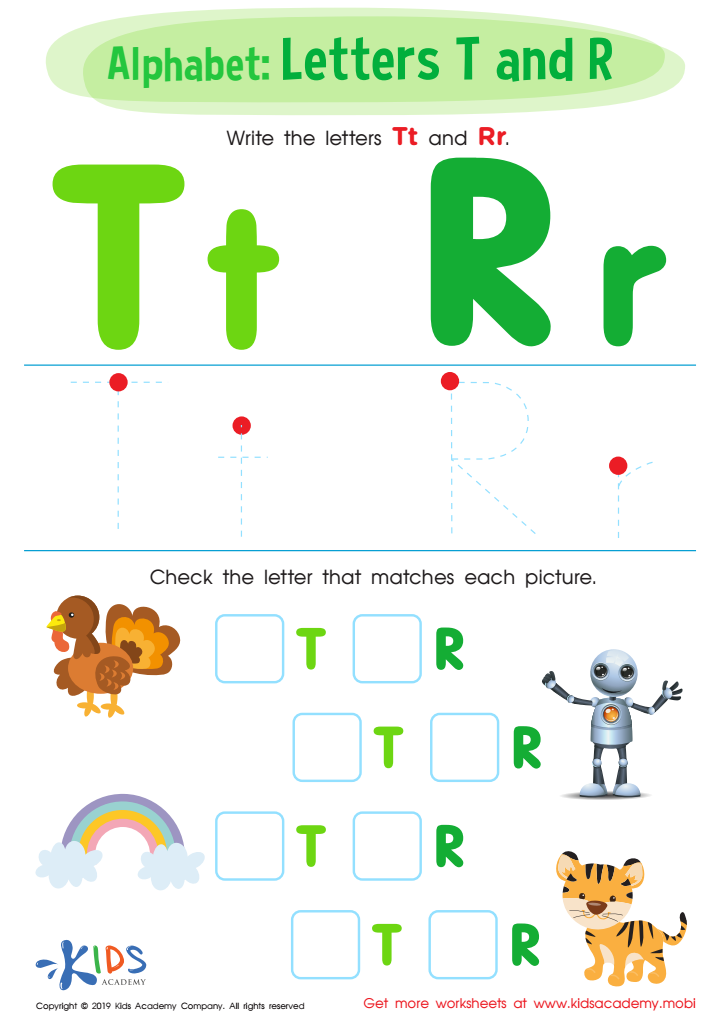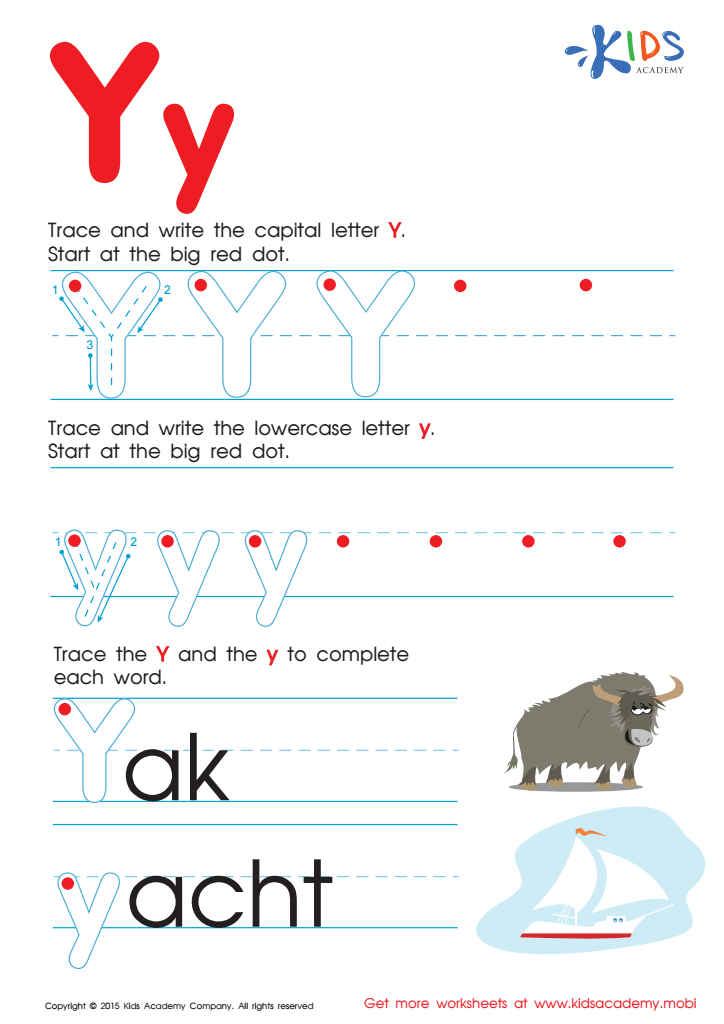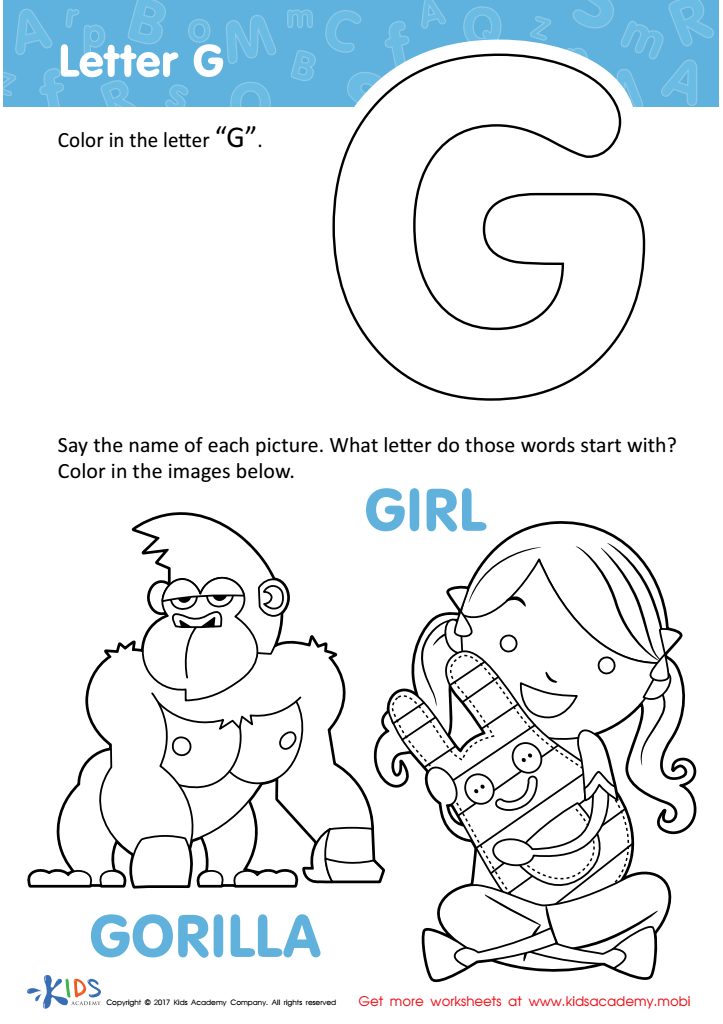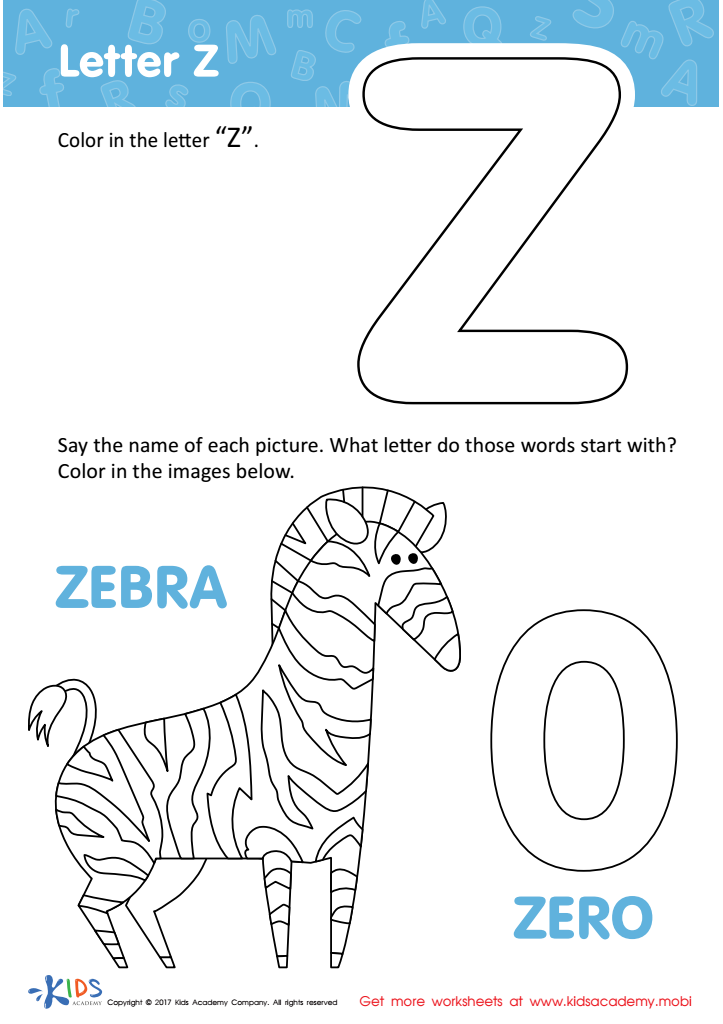Sound Association Letter Recognition Worksheets for Ages 4-9
5 filtered results
-
From - To
Discover our engaging Sound Association Letter Recognition Worksheets, designed for children aged 4-9! These printable resources help young learners connect sounds with letters, enhancing their phonemic awareness and foundational reading skills. Each worksheet features interactive activities that encourage children to match letters with corresponding images, making learning fun and effective. Perfect for educators and parents, our worksheets promote essential early literacy skills in an enjoyable way. Whether used at home or in the classroom, these resources empower children to gain confidence in their reading abilities. Explore our diverse collection today and support your child's journey towards becoming a proficient reader!


Letters T and R Worksheet


Letter T Coloring Sheet


Letter Y Tracing Page


Letter G Coloring Sheet


Letter Z Coloring Sheet
Sound Association Letter Recognition is crucial for children ages 4-9 as it serves as the foundation for literacy development. At this age, children are building essential skills that will influence their reading and writing abilities throughout their lives. By understanding the connection between the sounds of spoken language and the letters that represent those sounds, children can begin to decode words and build vocabulary.
Parents and teachers should prioritize this skill because it supports phonemic awareness, which is a key predictor of reading success. When children can associate sounds with letters, they become more confident in their ability to read and write, leading to improvements in overall academic performance. Additionally, sound association fosters critical thinking and problem-solving abilities, allowing children to approach language in an analytical way.
Moreover, early literacy skills greatly enhance a child’s self-esteem and motivation to engage with learning. The earlier these foundational skills are developed, the better equipped children will be to tackle complex literacy tasks as they progress through school. Therefore, investing time and resources into activities that promote sound association letter recognition can empower children's lifelong learning and communication skills, making it a priority for both parents and educators.
 Assign to My Students
Assign to My Students














